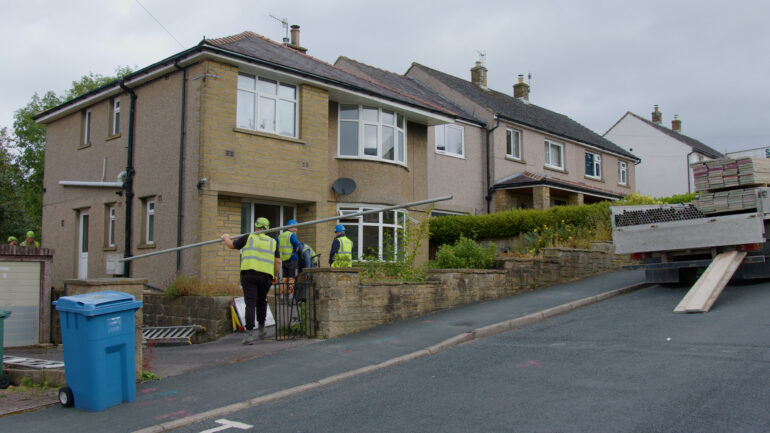Skipton Building Society has announced that its Regent Road retrofitting project has now reached its halfway stage.
The initiative, which launched in September, is focused on transforming a 1940s Energy Performance Certificate (EPC) D-rated property into a more energy-efficient home targeting an EPC rating of B.
The project has been designed to help homeowners and landlords across the UK navigate the complexities of retrofitting with practical insights gained through delivering their own retrofit.
Jonathan Evans, senior national account lead at Skipton, said: “Retrofit has a PR problem – it’s complicated, can be expensive and isn’t well understood like many other traditional products and services in the home-buying and selling journey.
“But it’s going to be a crucial vehicle for transforming the majority of the UK’s housing stock to homes with lower carbon footprints which are more affordable to heat and power, and much more energy efficient.
“We wanted to tackle that PR problem head on to see if the assumptions are fair, what might need to change, and to see what the experience we’re expecting many homeowners over the years to come is going to be like.
“To get the maximum learnings, we’re approaching it as a ‘deep’ or ‘whole house’ retrofit but recognising that the majority of people won’t be required to make quite so many changes on their own properties.”
Since the project began, a number of significant milestones have been achieved – the chimney stack was removed to address heat loss, while air vents and improved insulation were installed to reduce damp risks and enhance thermal efficiency.
In addition, a single-phase power supply was installed to support a new air source heat pump (ASHP), alongside preparatory work for solar panels and a larger fuse for an EV charge point.
According to Skipton, unexpected challenges, such as asbestos discoveries, underscored the importance of contingency budgeting and proactive planning.
Evans added: “Unexpected costs have been a challenge – until you pull up floorboards or peer behind soffits, the make-up of a house is a bit of an unknown as most property surveys aren’t invasive so don’t detect these issues.
“We’ve worked closely with the contractors to take quick decisions to remove asbestos where needed, when we were fitting the front bay windows we noticed it in the soffits behind the UPVC covering, so the window fitters wouldn’t proceed until it was tested and safely removed.
“As part of planning we also made sure we held back some contingency budget for these unforeseen issues.”
He said: “We want to demystify retrofitting for homeowners and landlords,”.
“Through this project, we’re not just transforming a home—we’re gathering insights that could help inform Government policies, industry practices, and Skipton’s future support for members.”



